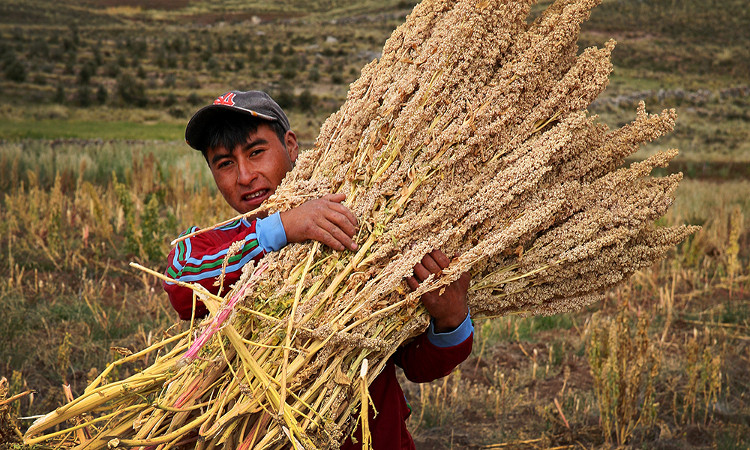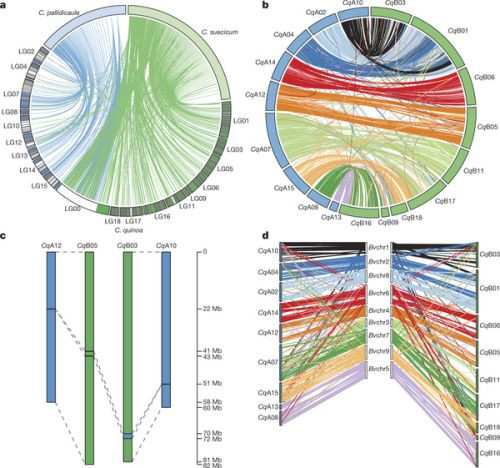Pluto will be the solution to global food security
According to experts on genetic modification on food crops, Plaque will be the solution to the risk of food shortages in the not too distant future on a global scale. Bran plants can provide a healthy source of nutritious food for the world by taking advantage of areas that are currently unusable, and the team's new genome will take us one step closer. to that goal.
Plague has become a standard food for nutritious healthy eating habits, but recent research shows that matches have much greater potential and potential.

Quinoa particles are used very flexibly and have been a major source of food for the ancient Andes civilization.
Scientists believe that Quinoa , the so-called "supercrop" , can solve food problems for the world's growing population. Quinoa particles are very versatile in use and have been a major source of food for the ancient Andes civilization. This plant can thrive in harsh environments and provide a more balanced source of nutrition than regular cereals. "As you know, matches are a very resilient plant , " said Professor Mark Tester, King Abdullah University of Science and Technology.
Experts have discovered a way to influence the bran plants to help change the way they grow and produce seeds. That makes the bitter taste of bran seeds more sweet and easier to eat. Researchers from King Abdullah University of Science and Technology decoded the genome of Chenopodium bran and produced the world's highest quality bran variety. Crop Science Professor Mark Tester, head of the project team, said: "Plankton is the key food source that has driven ancient Andes civilizations, but plants have been abandoned. when the Spaniards came to South America with cereal varieties from Europe, and matches were only revived as a new crop along with global concern over the past time. still not fully domesticated or bred to fully exploit its full potential, although it provides a more balanced source of nutrients for humans than cereals ".

Change the sequences in the genome to make bran plants popular and yield higher quality and yield.
Professor Tester and his team believe that there is great potential to change the sequences in the genome to make bran plants popular and to yield higher quality and quality and will be used commercially. more spacious. Breeders can use the group's new genetic information to control plant size to shorten harvest time and increase weather resistance. Plants can also give larger seeds and can grow closer to each other in large fields on an industrial scale.
The study included 33 scientists from four continents using a combination of cutting-edge sequencing technology and genetic mapping to pair with chromosomes. Professor Tester said: "A problem with sulfur is the natural bitter taste." This is due to the accumulation of chemical compounds called saponins in the seeds.

Quinoa can provide a healthy source of nutritious food for the world.
"We have correctly identified one of the genes that control the production of matcha saponins, when changing these genes will facilitate the reproduction of plants without saponins to make sweet seeds. more " . He added: "We all know that bran families are extremely resilient. It can be grown on poor soil, salty soil and at high altitudes. It really is an ideal crop."
Bran plants can provide a healthy source of nutritious food for the world by taking advantage of areas that are currently unusable, and the team's new genome will take us one step closer. to that goal.
- Honor the scientific role in food security
- The apocalyptic tunnel was added with a large number of seeds
- Miracle fonio: A solution to the future food security problem
- Marvel at the substance found under Pluto
- Discover the mysterious ice lake on Pluto
- NASA continues to publish more new photos of Pluto
- Climate change affects food supply
- Vulcan leads the poll of the name of the Pluto moon
- NASA announces the latest proof of life on Pluto?
- What is mysterious about Pluto's atmosphere?
- Deep sea can be found on Pluto
- Tidal power - New solution for Korean energy demand
 Green tea cleans teeth better than mouthwash?
Green tea cleans teeth better than mouthwash? Death kiss: This is why you should not let anyone kiss your baby's lips
Death kiss: This is why you should not let anyone kiss your baby's lips What is salmonellosis?
What is salmonellosis? Caution should be exercised when using aloe vera through eating and drinking
Caution should be exercised when using aloe vera through eating and drinking